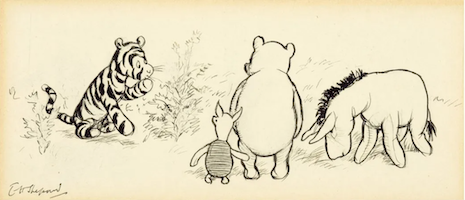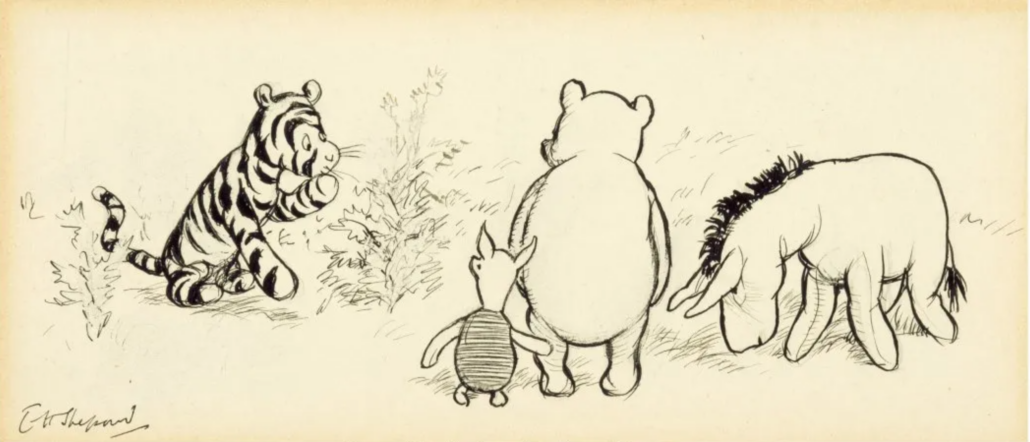
NEW YORK — The timid and lovable Piglet famously asks in the beloved children’s book, Winnie-the-Pooh, “We’ll be friends forever, won’t we Pooh?” to which Pooh replied, “Even longer.” This quote perfectly describes the relationship that millions of readers have had with the beloved books of A.A. Milne for more than 90 years.
Alan Alexander Milne (English, 1882-1956) was writing poems for a British humor magazine, Punch, illustrated by Ernest Howard Shepard (English, 1879-1976), when he created an iconic character unexpectedly. Milne’s poem Teddy Bear appeared in the February 1924 edition of the magazine, marking the first appearance of the nondescript teddy bear who would famously become known as Winnie-the-Pooh.
The bear in the poem, and most of the Winnie-the-Pooh characters that came later, were based on Milne’s son’s stuffed animals, including a stuffed baby pig, who became Piglet in the books; a tiger (Tigger), a pair of kangaroos (Kanga and her baby, Roo) and a donkey (Eeyore). The characters Owl and Rabbit were solely the author’s creation.
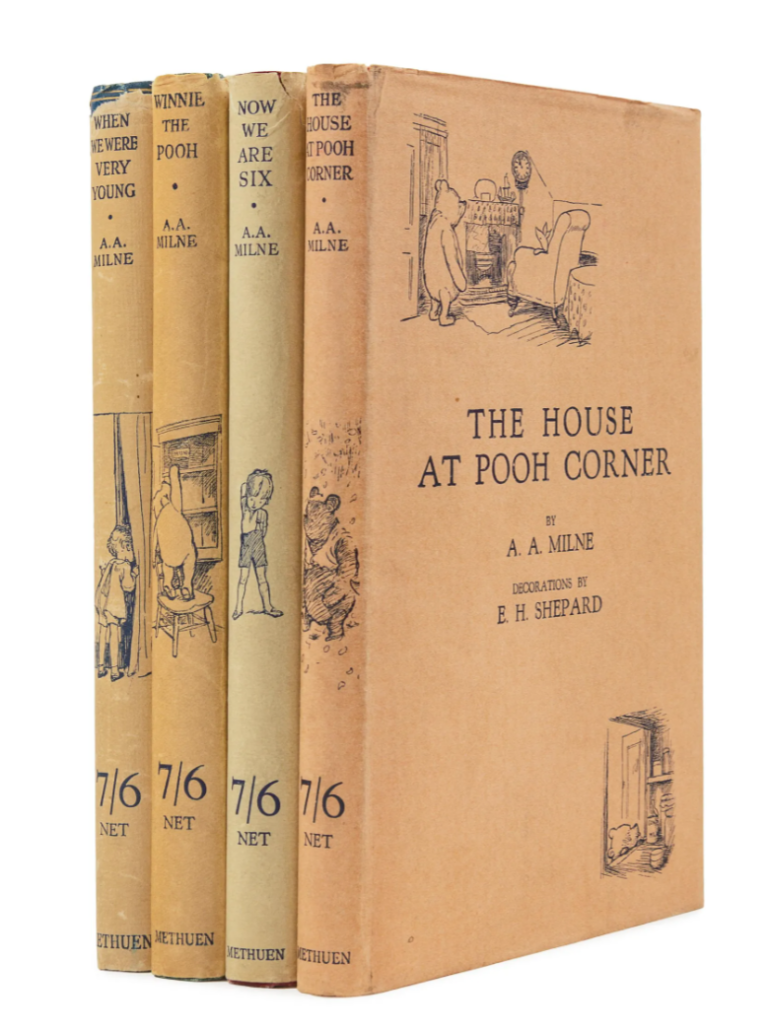
Christopher Robin Milne originally named his teddy bear “Mr. Edward Bear” but changed it to “Winnie” after meeting a Canadian black bear, Winnie (short for Winnipeg) in the London Zoo. In a period photograph found online, the young Milne is seen feeding Winnie inside her zoo enclosure. The bear, first bought as a cub, was given to the zoo after World War I, during which it served as a military mascot. Winnie had been in the zoo nearly 10 years before meeting the Milnes and was so tame that children were allowed to meet her and ride on her back. That explains the genesis of “Winnie,” but where did “the Pooh” come from? Reportedly, this came from a nameless swan that Milne wrote a poem about in his first book, When We Were Very Young, a poetry book in 1924.
Nearly countless editions and versions of Winnie the Pooh stories and books have been published, and Walt Disney’s movies featuring Pooh and his friends have extended their popularity for multiple generations. As a result, there are many kinds of Pooh collectibles, from figurines, toys and lunchboxes to holiday ornaments, clocks and Lenox china vases. But the collector’s Holy Grail is Milne’s original set of four books. The series kicked off with When We Were Very Young and immediately captivated readers. Milne teamed up with illustrator Shepard for Winnie-the-Pooh in 1926, a collection of short stories about the adventures of Pooh and his friends. A year later, they released another book of poems, Now We Are Six, and finished off the series in 1928 with more short stories in The House at Pooh Corner.
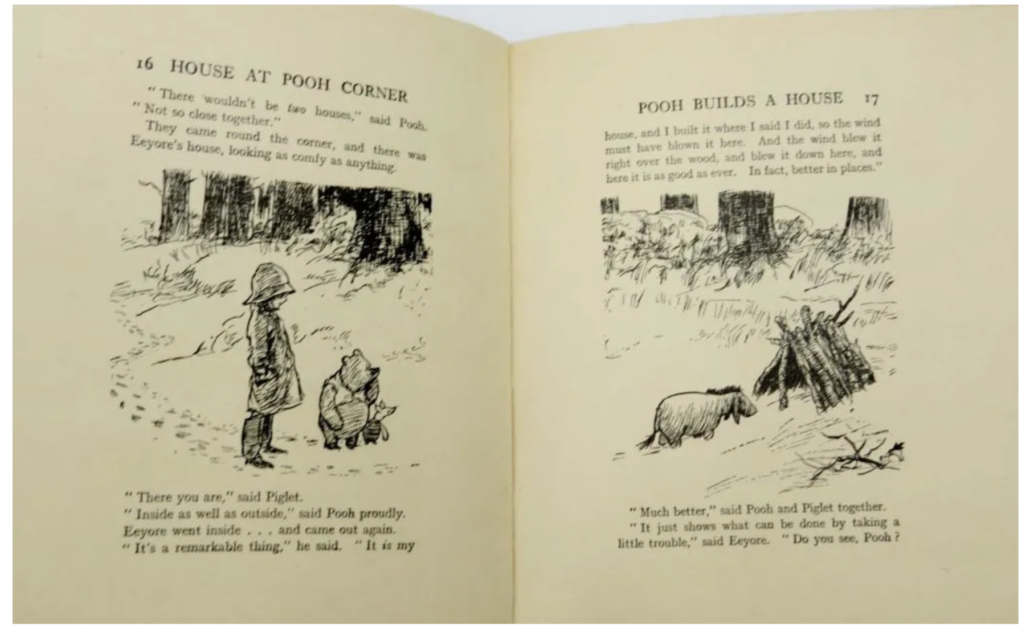
Owing to the instant popularity of When We Were Very Young, its publisher, Methuen & Co. in London, issued a second printing of the first edition within months. A complete set of all four volumes of the original Pooh books earned $8,500 plus the buyer’s premium in November 2019 at Hindman. A small run of about 100 copies in a “large paper” format was also released, and individual books from this series, depending on condition, can bring more than $10,000 each. Specialty copies of Milne’s books can perform well at auction such as a limited edition run of 20 copies in 1928, which was printed on Japanese vellum and signed by both Milne and Shephard. A copy of The House at Pooh Corner, number 12 from that run, made $16,250 plus the buyer’s premium in July 2020 at Mike Clum Inc.
Shepard’s original book illustrations are highly sought after by collectors. An ink drawing titled It Appears You have Eaten a Bee sold in April 2021 for $75,000 plus the buyer’s premium at Heritage Auctions. It was used in chapter two of The House at Pooh Corner, and depicts Eeyore and Pooh with the impetuous Tigger, who made the unfortunate choice of eating the stinging insect for his breakfast.
A Pooh illustration set an auction record at Sotheby’s London in July 2018 when Shepard’s original ink drawing for a map of the Hundred Acre Wood attained $568,761. The drawing is canon to legions of Pooh fans, establishing the layout of the forest where Pooh and his friends lived. It’s also the first drawing in the Winnie-the-Pooh book.
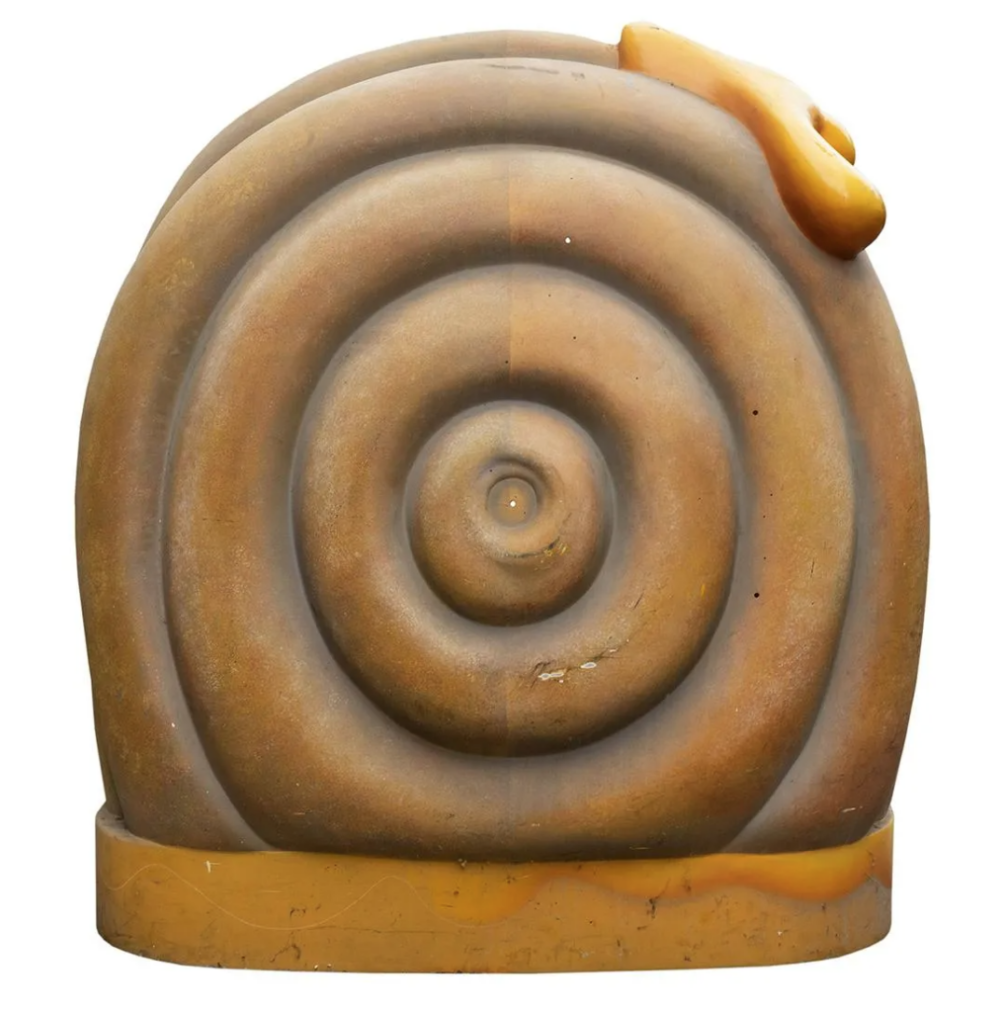
The Many Adventures of Winnie the Pooh, based on the 1977 Disney movie, is a ride that opened in 1999 at Disneyland in California and in a revised format at several other Disney parks around the world. Collectors who have enough display room will gravitate to theme park Pooh memorabilia and artifacts, such as the back end of one of Pooh ride vehicles, which sold for $9,000 plus the buyer’s premium in February 2020 at Potter & Potter Auctions. Signs are also popular with collectors and take up far less room. A triangular Eeyore Disneyland parking lot sign, 30 by 30in on each side, brought $4,200 plus the buyer’s premium in May 2021 at Van Eaton Galleries.
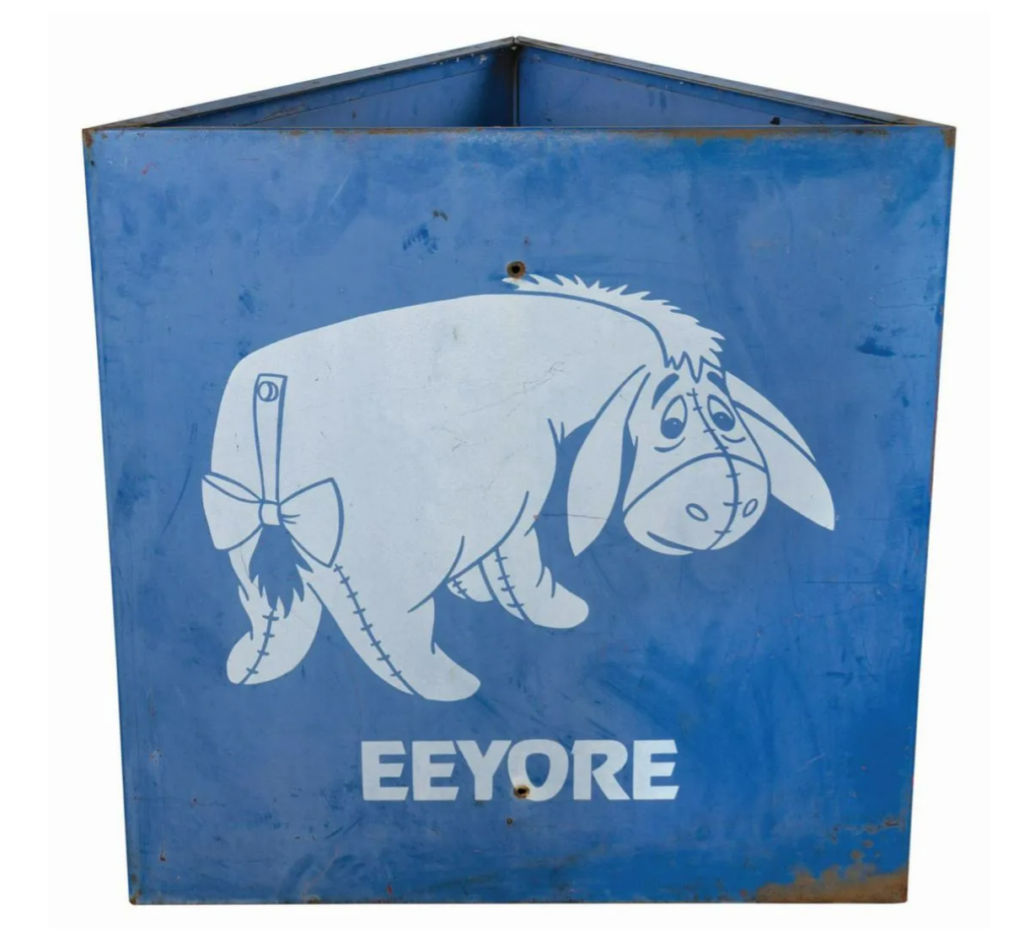
Even artifacts that are not Pooh collectibles but are associated with Milne draw keen interest. In October 2021, Summers Place Auctions auctioned off a wooden bridge for £131,625 (about $179,000). The bridge was where A.A. Milne and his son Christopher Robin invented the game Poohsticks, a game repeated in the Pooh books, and is said to have inspired his books.
Milne’s heartfelt and whimsical tales, coupled with Shepard’s charming illustrations, delighted readers when they were new and enchanted the generations that followed. The merchandise created to honor the bear of very little brain gives collectors dozens of ways to celebrate their memories of the beloved books–memories of hearing them for the first time as a child, and memories of reading them to their own children and grandchildren.
# # #


